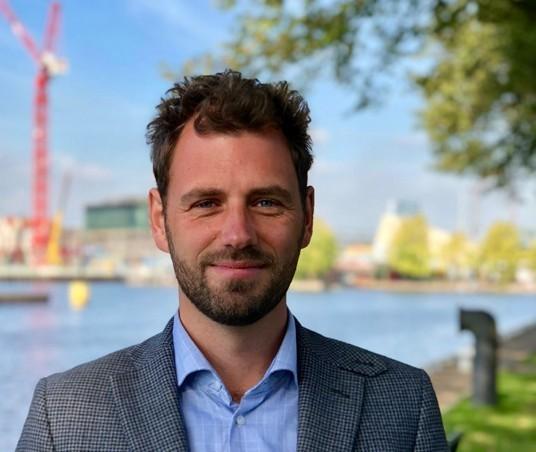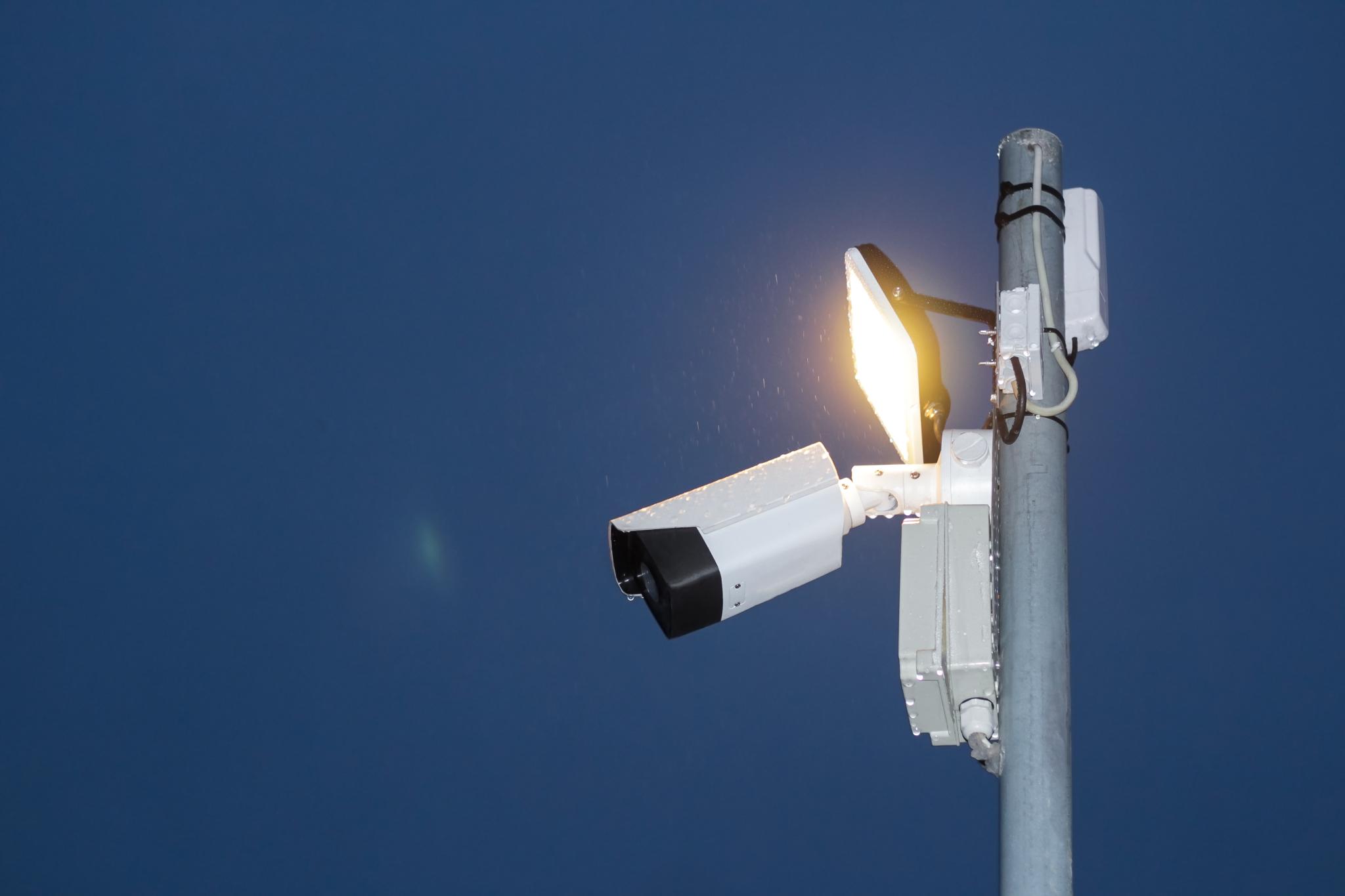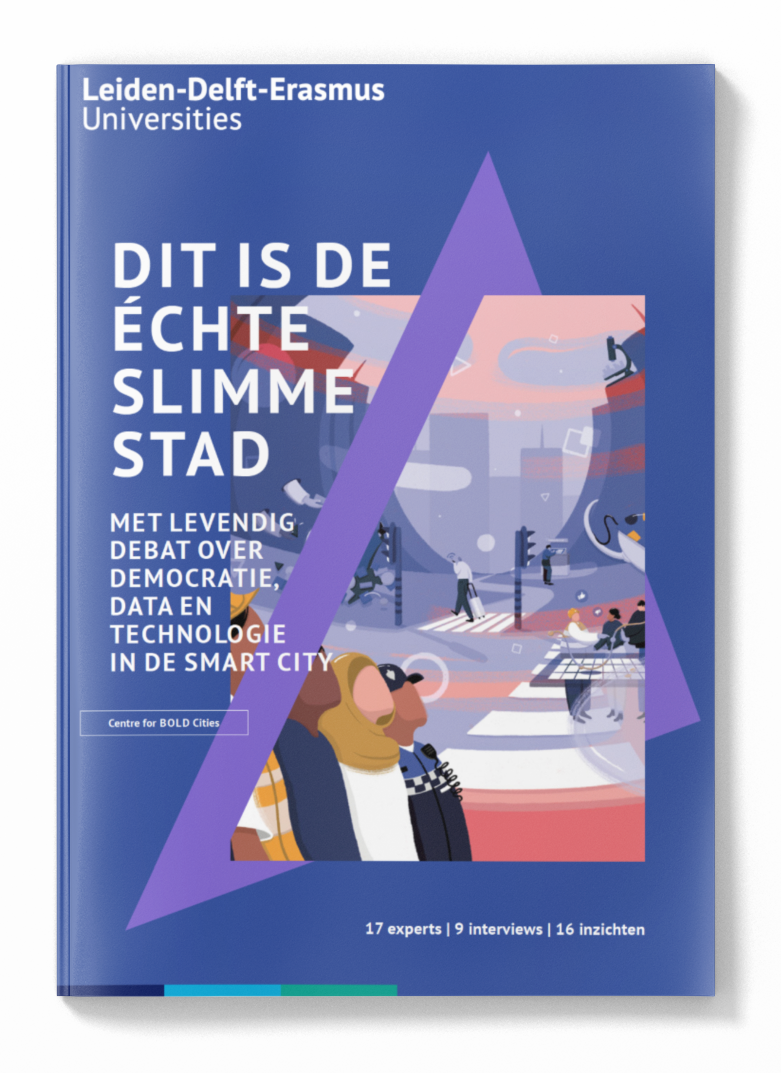In living labs, municipalities, companies, and researchers experiment with smart technology and citizen participation in public spaces. This can result in improvements and greater closeness to residents. As long as it is transparent and not too complex, say Thijs Turèl and Sabrina Huizenga. By Jeroen van Raalte.
Beachgoers as guinea pigs
 Rubbish bins that self-register that they are full, cameras that count bathers: these are some of the technologies being experimented with in Scheveningen. For several years, part of the seaside resort's boulevard has been set up as a testing ground for 'smart' innovations. Here, the municipality of The Hague, researchers and industry are testing sensors and data-driven technology that promise to make the busy seaside resort more liveable.
Rubbish bins that self-register that they are full, cameras that count bathers: these are some of the technologies being experimented with in Scheveningen. For several years, part of the seaside resort's boulevard has been set up as a testing ground for 'smart' innovations. Here, the municipality of The Hague, researchers and industry are testing sensors and data-driven technology that promise to make the busy seaside resort more liveable.
The Scheveningen project is a living lab, for several years now a popular concept in the land of municipalities. Living labs usually consist of a demarcated area where smart technologies are experimentally applied. 'It's not a laboratory with controlled conditions, but amidst the public,' explains Thijs Turèl. He is programme manager at the Amsterdam Institute for Advanced Metropolitan Solutions. 'Sometimes it's only for testing a certain technology. Other experiments focus instead on interaction with residents and passers-by.'
In today's smart city applications, residents' interests are not always prioritised.'
With data, sensors and algorithms, cities can manage their public spaces better. Turèl investigates how these technologies can be designed and used in such a way that residents' interests such as privacy, control, and comprehensibility are given priority. 'In the current generation of smart city applications, this is still lacking at times.’
 Beware of data hoovers
Beware of data hoovers
With living labs, the explicit aim is for citizens to consciously participate, says urban sociologist Sabrina Huizenga. 'In the past, new technologies were usually conceived and implemented top-down. Here, the idea is that there is more bottom-up influence. In that sense, it’s a new way of working.'
In Eindhoven, they went pretty far. Six years ago, the municipality installed sound cameras in nightlife area Stratumseind, that use artificial intelligence to signal aggression on the street. The living lab then experimented with smell and the colour of street lights to calm people down. 'Some find such unconscious influence - nudging - morally problematic. I think it's okay to consider this as a government if it serves a public interest, and if the alternative would involve a heavier intrusion into people's lives.'
The idea of such a data hoover driving around makes me feel uncomfortable.’
It is very tempting to make full use of technological capabilities. Turèl: 'Take scan cars. There's a huge number of conceivable applications that make public space management more efficient. Still, the idea of such a data hoover driving around makes me uncomfortable, because it's unclear to citizens what it all registers.'
Stickers with explanations please, and blurred pixels
 A lack of clarity about the what and for whom: that applies to more technology in public spaces. Turèl is therefore working on a guideline for stickers on sensors. 'These state what the technology does and doesn't register, who owns the equipment and where people can complain. That's how you create counter-power.' His institute is also experimenting with remote cameras at the Johan Cruijff Arena and at the Navy Terrain, a living lab in Amsterdam. 'When those cameras aren't filming, which is quite often, a little cover slides in front of the lens. That way, you make clear when it's carrying out measurements. Citizens can then question that.'
A lack of clarity about the what and for whom: that applies to more technology in public spaces. Turèl is therefore working on a guideline for stickers on sensors. 'These state what the technology does and doesn't register, who owns the equipment and where people can complain. That's how you create counter-power.' His institute is also experimenting with remote cameras at the Johan Cruijff Arena and at the Navy Terrain, a living lab in Amsterdam. 'When those cameras aren't filming, which is quite often, a little cover slides in front of the lens. That way, you make clear when it's carrying out measurements. Citizens can then question that.'
Several living labs are experimenting with data minimisation. Turèl: 'We design sensors in such a way that they collect only the necessary information, not by-products. For registering crowds on the street, for example, you can use a low-resolution camera. Passers-by will then turn into blurred pixels. That way you can be sure that their identity can never be reproduced. That's better than filtering out personal data afterwards.’
Nice, that smart charging station, but too complex to explain
Power consumption in the neighbourhood could be smarter, thought grid operator Liander. Because if all electric cars charge at the same time, the fuse will not hold. Turèl: 'At a test site in Lochem, we started working on smart charging. Mathematicians can optimise this wonderfully; they even take the prediction of the electricity price into account.' He continues: 'But if you make it too complex, people no longer understand it. We wanted to develop a charging station that explains the system choices to residents, so why one car’s charged earlier than another. But what the engineers saw as a simple algorithm already turned out to be very difficult to explain.'
Not only the complexity of smart applications can alienate participants from a living lab. Things like language and presentation also play a role, Huizenga observes. 'I once attended a residents' evening of an urban lab. The initiators had made beautiful glossy leaflets about the neighbourhood. This gave residents the impression that everything had already been decided and they angrily left the lab.'

Not top-down or bottom-up but middle-up-down
It seems so sympathetic: give citizens a box of sensors, batteries and wires and let them invent smart city applications themselves. However, theory is one thing, practice another, notes Turèl. 'In Amsterdam's Waterlandplein neighbourhood, a colleague recently interviewed sixty residents and held several design sessions. It proved difficult for people to come up with something that doesn’t yet exist, but that they do actually need.'
At the Counting Frame project, however, also in North Amsterdam, this actually seems to work. Residents can hang a traffic counter behind their window that registers the number of pedestrians, cyclists, cars, and trucks. While the technology has been selected, it lacks a defined purpose. 'Residents are allowed to think of what they want to use the data for. For instance, one woman told me she's annoyed by the many trucks in her narrow street. With a counter like that, she can substantiate her complaint. The officials hadn't thought of that beforehand.'
An initiative often originates from an involved citizen with a specialist background.’
It does not have to be either top-down or bottom-up, Huizenga says. In practice, she sees a different dynamic. 'Someone in the field described it as middle-up-down. An initiative often originates from an involved citizen with a specialist background. He knows his way around the municipality. Then he or she involves other local residents.' So the initiative comes from the usual suspects involved in citizen participation. And there is not much against that, thinks Turèl. 'That's just how it works.'
Sabrina Huizenga is doing an anthropological post-doctoral at Leyden University on new state-citizen relations within the NWA Crafting Resilient Societies project. She previously investigated urban labs dealing with the healthy city, among other things.
Thijs Turèl is programme manager at the Amsterdam Institute for Advanced Metropolitan Solutions, where he is exploring with the Responsible Sensing Lab how cities can use smart technology responsibly in public spaces.

 White paper about Smart Cities
White paper about Smart Cities